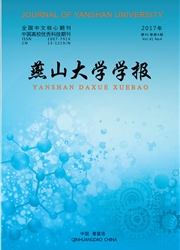

 中文摘要:
中文摘要:
本文基于偏序结构理论和方法,研究了情态动词语义与时、体、态句法特征的互动关系。以英语情态动词can为目标词,划分了can的3个词义:能力(ability)、允许(permission)和可能性(possibility)。以can与相邻词的互信息作为语义特征,显性和隐性时态、体、语态特征为句法特征,构建了反映情态动can词的3个词义与时、体、态句法特征共现关系的形式背景,并生成了可视化展示情态动词语义与其属性特征之间的偏序结构关系和概念层次关系的属性偏序图。基于此图,发现了情态动词can与时、体、态特征的互动关系等知识。本文研究结果为自然语言处理中的特征选择和规则提取研究提供了重要的理论和实践依据。
 英文摘要:
英文摘要:
The interactive relations between the senses of English modals and the syntactic features of time,aspect and voice are studied based on the theory and approach of partial-order structure. English modal verb can is chosen as the target word and 3senses are categorized: can( ability), can( possibility) and can( permission). Taking the mutual information and the explicit and implicit time,aspect and voice as attributes,a formal context of can is established,and an attribute partial-order structure diagram( APOSD) is generated and used as a model for word sense disambiguation( WSD) and knowledge discovery of can. Some knowledge relating to the interactive relation between the senses of can and the features of time,aspect and voice is discovered. The results of this study provide important theoretical and practical evidence for the feature selection and rule extraction in natural language processing.
 同期刊论文项目
同期刊论文项目
 同项目期刊论文
同项目期刊论文
 期刊信息
期刊信息
